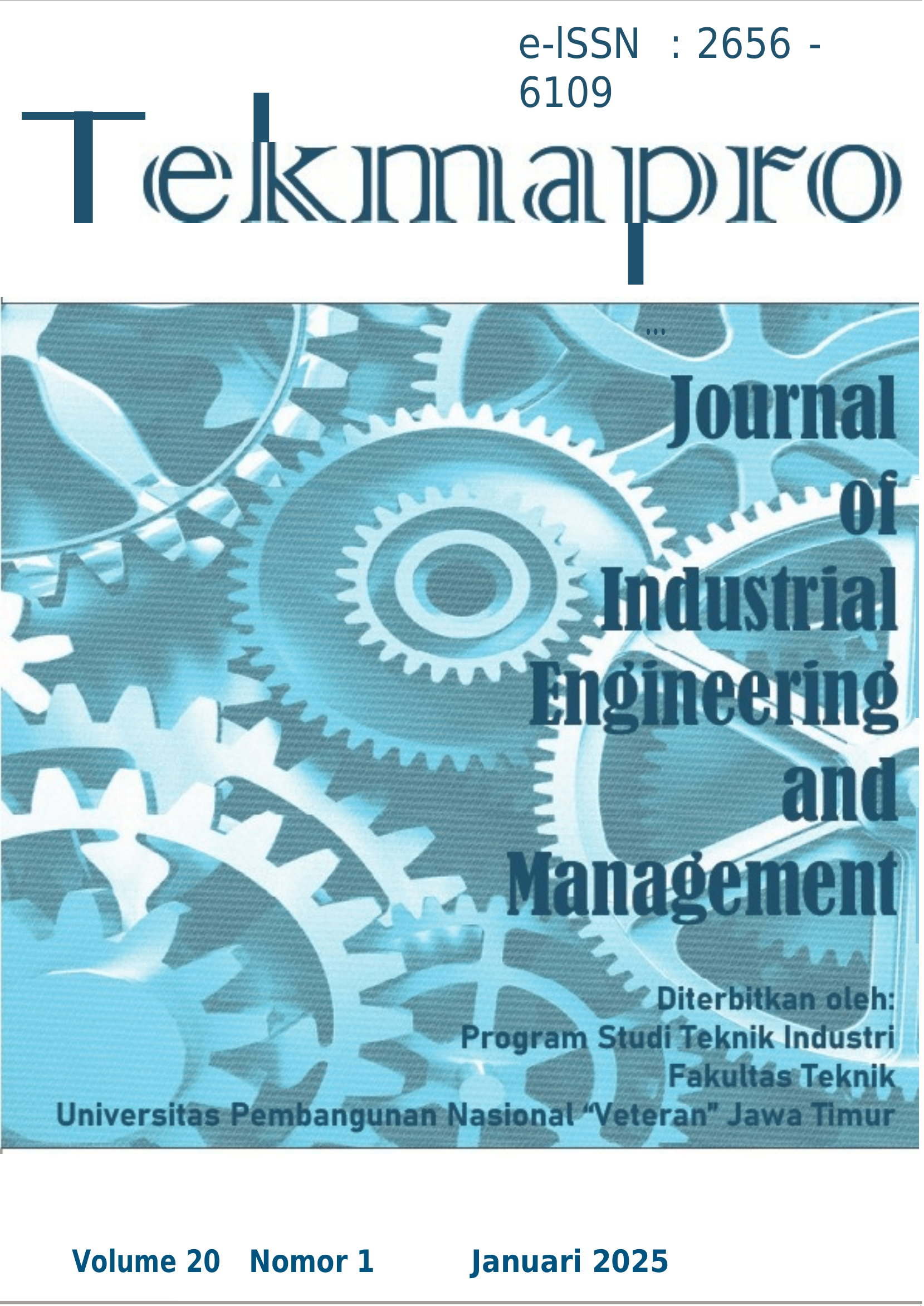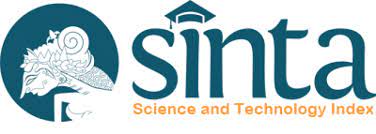Combination of BLOCPLAN Algorithm, HIRARC Analysis, and Arena Simulation for Design of Transportation and Heavy Vehicles Facilities
Keywords:
Arena Simulation, BLOCPLAN, Facility Layout, HIRARC, Government FacilitiesAbstract
Purpose – The study presented in this paper reports on a pilot implementation of scientific management principles in addressing city government facility problems across divisions. To pursue more effective and efficient results, the Tambaksari site that serves various Surabaya Department of Water Resources and Highway Development (SubDRD) tasks, including welding, storage, repair, drainage work, refueling, and security, covering a 15,457 m2 area is evaluated and improved using facility layout, occupational health and safety, and simulation methods. Existing facilities lack grouping based on activities, resulting in inefficiencies. The site poses potential hazards, such as oil spills and hazardous welding practices. This research seeks to optimize facility layout by implementing occupational health and safety standards for effective, efficient activities, and appropriate control systems.
Methodology – This research identifies facility needs, sizes, and proximity relationships using the BLOCPLAN algorithm. Hazard management employs the Hazard Identification, Risk Assessment, and Risk Control (HIRARC) method, identifying hazards through Process Hazard Analysis (PHA) and assessing risk levels with Failure Mode and Effect Analysis (FMEA). Control system planning, based on the hierarchy of control, is integrated into facility layout design. Stakeholder feedback is gathered through a Focus Group Discussion (FGD) to refine alternative designs. Arena software simulation assesses workstation utility, guiding adjustments for optimization.
Findings – The combination of the BLOCPLAN algorithm, HIRARC analysis, and Arena simulation resulted in an estimated design layout that can reduce total out of direction travel distance by 47.32%, backtracking by 43.31%, and cross-movement by 47.37%.
Research Limitations – Despite the practical implications involve shaping a more effective Tambaksari layout for SubDRD operations, potentially improving work productivity, creating a safer work environment, and enhancing maintenance service quality for Surabaya City Government infrastructure, the occupational health and safety aspects in this research are only considered concerning their influence on layout design and the simulations only target the workshop activities.
Originality – This study is original in the scope of Indonesian city government work that rarely implementing scientific management methods in addressing their problems and challenges. In addition, this study provides integrated analysis across divisions in city government which are usually very rigid and limited by bureaucracy.
Downloads
References
Adewunmi, Y. A., Alister, A., Phooko, B., & Nokukhanya, T. (2019). Energy Efficiency Practices in Facilities Management in Johannesburg. Journal of Facilities Management, 331-343.
Alijoyo, A., Wijaya, B., & Jacob, I. (2021). Preliminary Hazard Analysis . Bandung: CRMS.
Brinkoe, R., & Nielsen, S. B. (2017). Multiplying The Use of Space and What It Implies in Practice: A Cross-Case Analysis. Journal of Facilities Management, 197-215.
Gamal, S., El-Nemr, M. K., & El-Kassas, A. M. (2020). Enhancement of Bi-Objective Function Model to Master Straight-Line Facilities Sequences Using Frequency From To Chart. Journal of Facilities Management, 1-12.
Groebnoer, D. F., Shannon, P. W., & Fry, P. C. (2018). Business Statistics: A Decision Making Approach. United Kingdom: Pearson Education.
Heragu, S. S. (2008). Facilities Design 3rd edition. United States of America: CRC Press.
Hunagund, I. B., Madhusudanan, V., & Kempiah. (2021). A Survey on Discrete Space and Continuous Space Facility Layout Problems. Journal of Facilities Management, 235-283.
International Labour Organization (ILO) Jakarta. (2013). Keselamatan dan Kesehatan Kerja: Sarana untuk Produktivitas. Jakarta: International Labour Organization (ILO) Jakarta.
Kelton, W. D., Sadowski, R. P., & Zupick, N. B. (2015). Simulation with Arena . New York: Mc Graw Hill Education.
Kementerian Sumber Daya Manusia. (2008). Guidelines for Hazard Identification, Risk Assessment, and Risk Control. Malaysia: Kementerian Sumber Daya Manusia.
Kementerian Tenaga Kerja dan Transmigrasi Republik Indonesia. (1980). Peraturan Menteri Tenaga Kerja dan Transmigrasi (Permenakertrans) RI No 4/MEN/1980 Tentang Syarat - Syarat Pemasangan dan Pemeliharaan Alat Pemadam Api Ringan (APAR). Indonesia: Kementerian Tenaga Kerja dan Transmigrasi Republik Indonesia.
Montgomery, D. C. (2013). Introduction to Statistical Quality Control Seventh Edition. United States of America: John Wiley & Sons, Inc.
National Fire Protection Association (NFPA). (2000). National Fire Protection Association (NFPA) No 101 Tahun 2000. United States of America: National Fire Protection Association (NFPA).
Office of The Federal Register. (2017). 2017 CFR Annual Print Title 48 Federal Acquisition Regulations System Chapters 15 to 28. Inggris: IntraWEB, LLC and Claitor's Law Publishing.
Pemerintah Kota Surabaya. (2023). Visi Misi Kota Surabaya. Retrieved from Pemerintah Kota Surabaya: https://surabaya.go.id/
Robinson, S. (2004). Simulation: The Practice of Model Development and Use. England: John Wiley & Sons, Ltd.
Seshadhri, G., & Paul, K. K. (2016). User Requirement Related Performance Attributes for Government Residential Buildings. Journal of Facilites Management, 409-421.
Spitz, K., Trudinger, J., & Orr, M. (2022). Environmental Social Governance Managing Risk and Expectations. Inggris: CRC Press.
Stephens, M. P. (2019). Manufacturing Facilities Design & Material Handling Sixth Edition. Inggris: Purdue University Press.
Telsang, M. T. (2006). Industrial Engineering and Production Management. Inggris: S. Chand Publishing.
Tompkins, J. A., White, J. A., Bozer, Y. A., & Tanchoco, J. (2010). Facilities Planning Fourth Edition. United States of America: John Wiley & Sons, Inc.
Wignjosoebroto, S. (2009). Tata Letak Pabrik dan Pemindahan Bahan. Surabaya: Penerbit Guna Widya.










